KEF R7 Meta Review
KEF has updated its R series with the performance-enhancing “Metamaterial Absorption Technology”. While it may initially sound like marketing, it brings an impressive gain in sound quality, as demonstrated by the R7 Meta test.
by Marius Dittert
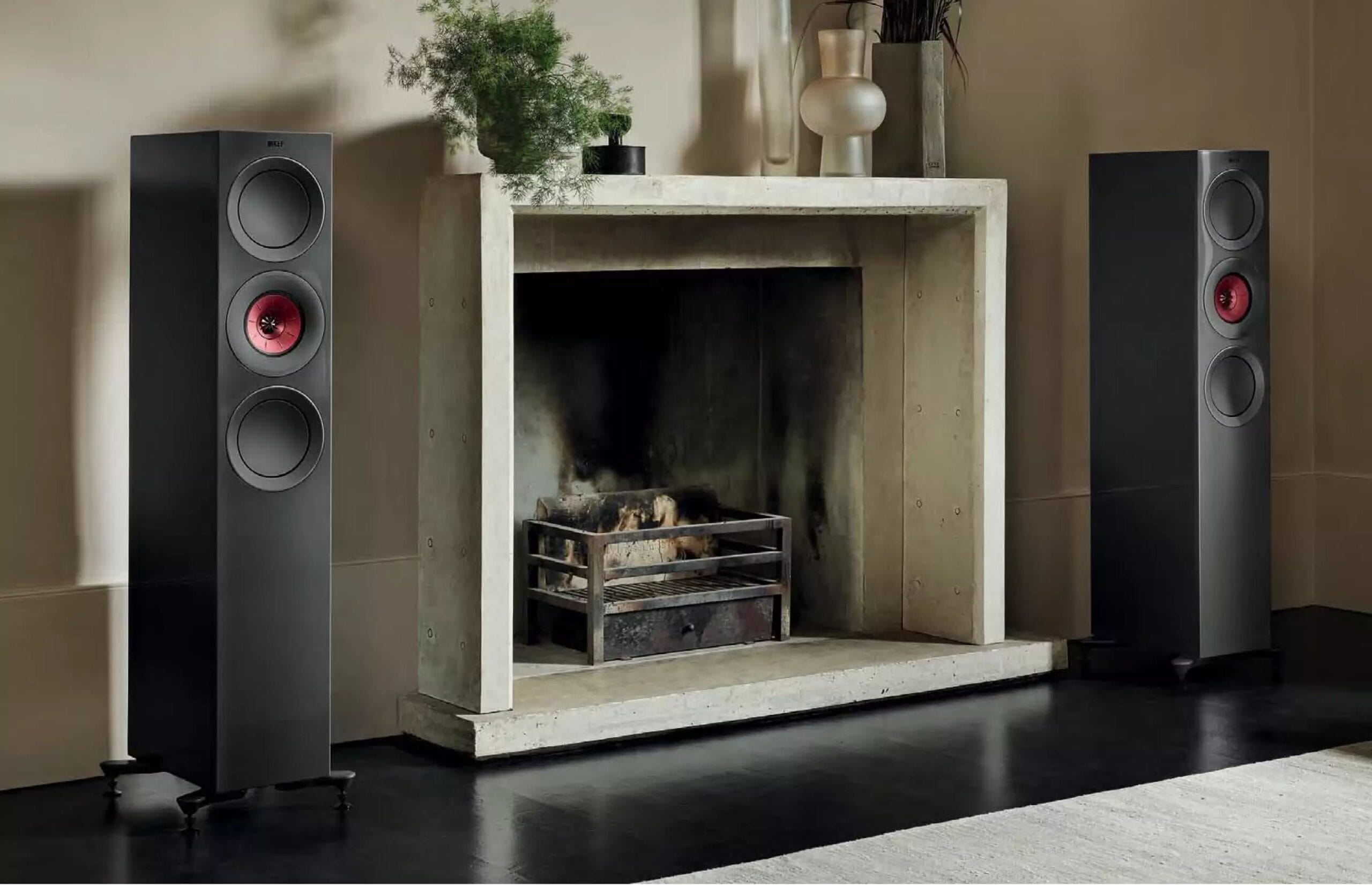
It seems like there’s a new speaker series every month. Typically, they bring important improvements: A new surround and a stronger magnet on the woofer can, for instance, produce tighter, more powerful bass.
However, what KEF achieves with MAT (Metamaterial Absorption Technology), now introduced for the first time in their mid-range (R series), goes beyond typical developments, as shown by our test candidate, the three-way floor-standing speaker R7 Meta. The sound-absorbing technology, already found in some of KEF’s high-end speakers, offers undeniable advantages and is now available to a wider audience for the first time with the new R series.
Completely Redesigned Uni-Q
MAT means that a round plate sits behind the central point source – KEF’s characteristic Uni-Q driver. But this plate is special, as it features a highly complex, labyrinth-like structure, designed to absorb unwanted sound from the back of the tweeter. This is meant to eliminate distortions and deliver purer, more natural sound reproduction.
The British company describes this effect as an acoustic black hole: MAT is said to remove up to 99% of unwanted frequencies between 620 Hz and 40 kHz, leading to a supposedly 40% more linear frequency response. Incidentally, Wilson Benesch takes a similar approach with the Fibonacci grid around the tweeter.
The Uni-Q driver, the heart of every KEF speaker, is highly complex and used in all high-end speakers from the traditional brand. It is recognized by its unique star-shaped design at the center. For the new R series, KEF has given it a new suspension, an improved voice coil system, and optimized damping of resonances between the tweeter and midrange membrane. The flexible mechanical connection to the housing (Decoupling Chassis) is the same as found in KEF’s Reference and Blade models.
Like in the Reference Meta, the crossover has been upgraded in the test candidate, and the cabinet construction is stiffer than its predecessor. The nearly 30-kilogram R7 Meta is the second-largest model in this series. It features two 16.5 cm woofers that surround the Uni-Q in a D’Appolito arrangement. On the back of the cabinet are two large bass reflex ports, which are of the same length, unlike the more expensive Reference Meta.
The Uni-Q driver is essential to the KEF sound. The point source is now in its 12th generation at KEF.
Speaking of high build quality: The R7 Meta impresses not only with its substantial weight, massive metal feet, and clean finish. The new front grilles also contribute to the speaker’s elegant appearance. They are held magnetically, avoiding unsightly holes on the baffle. Additionally, they are covered in Alcantara – an expensive microfiber fabric often used in the automotive industry, designed not to interfere with sound reproduction. Thanks to the fine perforated structure of the grille and the Alcantara covering, the KEF looks remarkably elegant.
Exclusive Color Options
As always with KEF, the speakers are available in black or white lacquer with matching drivers. Customers can also opt for a pair with satin walnut veneer and copper-colored drivers. Additionally, the floor-standing speaker, with its modern exterior, is available in a special titanium gray finish with a bright red Uni-Q driver, just like our well-crafted test sample.
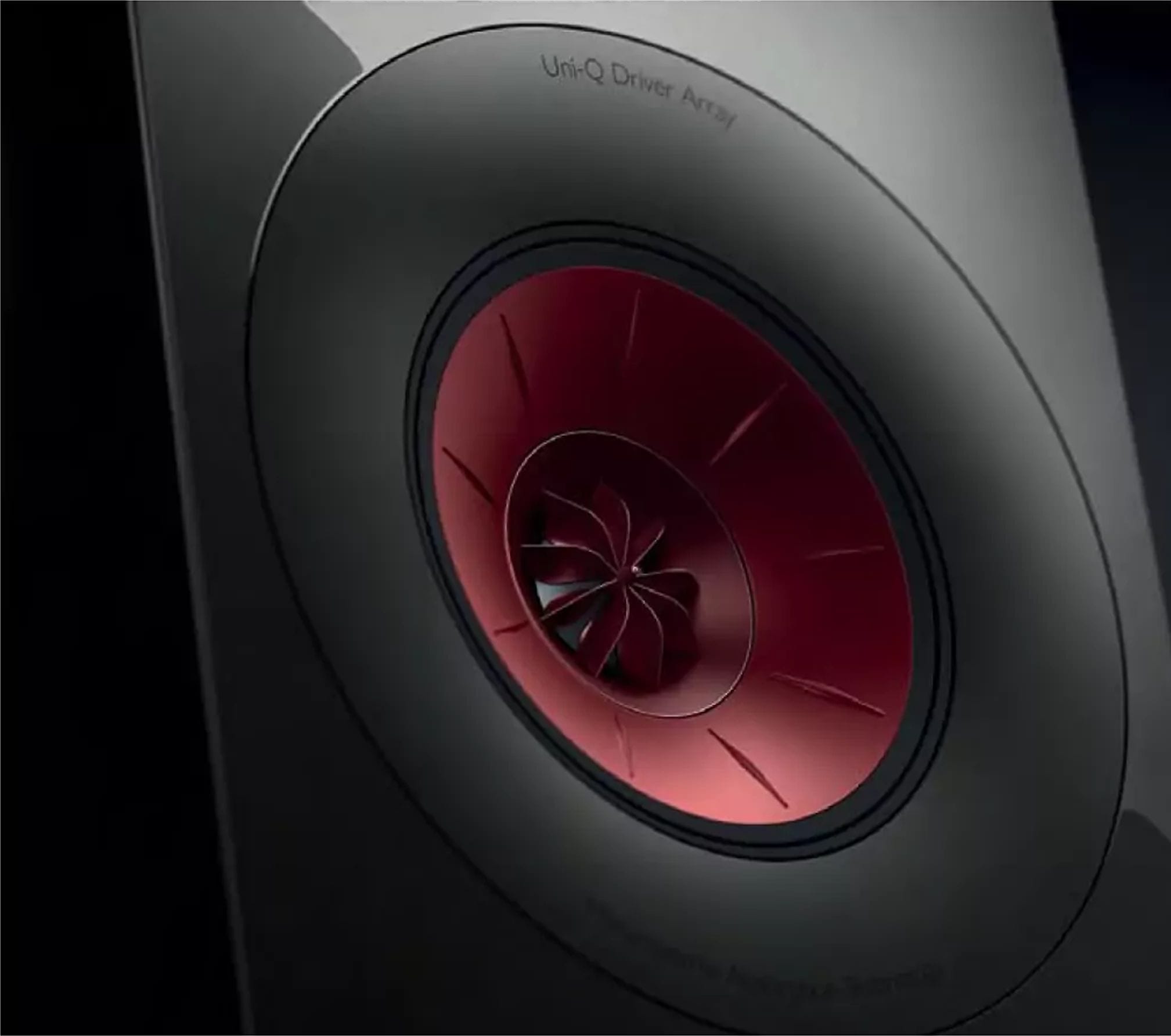
For the Titanium Gloss version, KEF colors the Uni-Q point source in red.
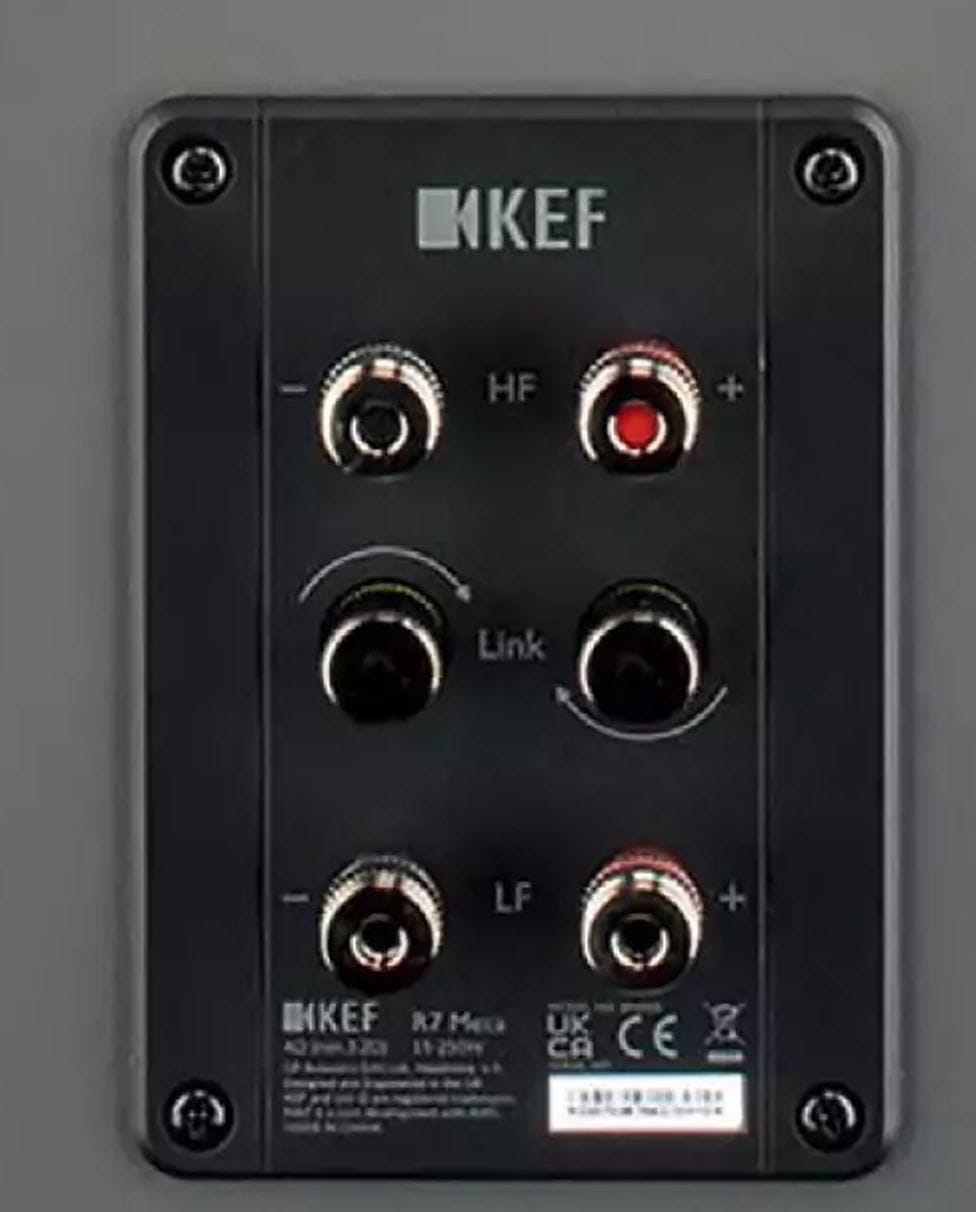
The R7 features a bi-wiring terminal with robust screw connections. The integrated bridges can be opened or closed in the middle.
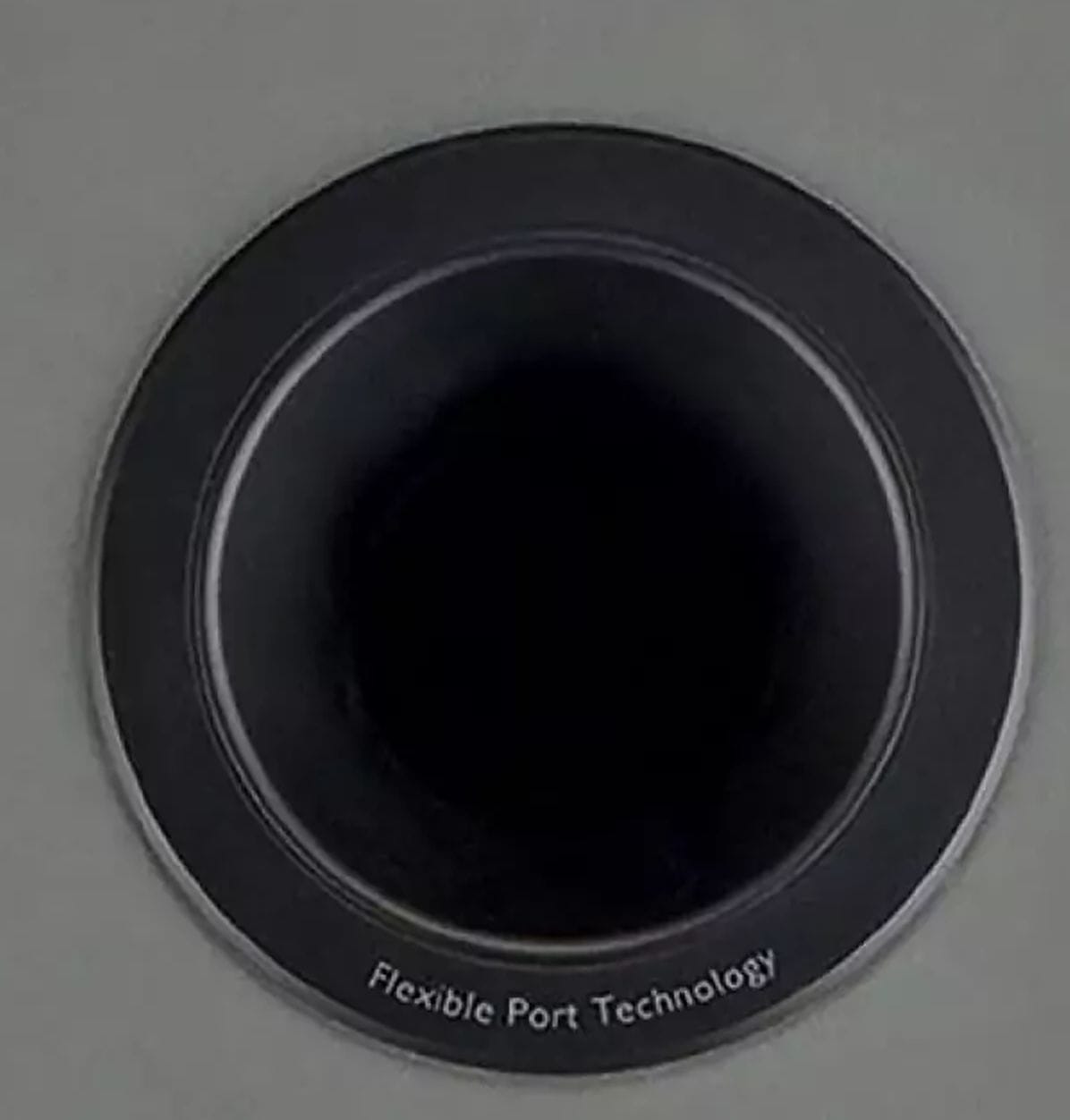
Flexible port walls help to reduce turbulence.
The R7 Meta left an absolutely top-notch impression in the test lab as well. Particularly the measurements for distortion, timing, and impulse response were of impressive quality. Lab colleague Florian Goisl commented on the R7 Meta’s performance: “The KEF does everything right.”
Benchmark Sound
And just as it measured, the R7 Meta sounded equally impressive. For its price, it delivered such a commanding performance that left the author in awe.
No matter what music programs you subjected the UK-made floor-standing speaker to, its highly successful tonal balance ensured that even at high volumes, there was absolutely no harshness. Its remarkably “smooth,” pleasing sound was not the result of a “soft” comforting sound – on the contrary, the R7 Meta offered high resolution, but it never sounded harsh, just perfectly balanced. Furthermore, its coaxial-type, extremely well-defined, and spatially precise sound rested on a solid foundation, although it didn’t extend into ultra-deep bass. Bass impulses sounded just as you’d want – the perfect balance between speed, punch, and rich sound reproduction.
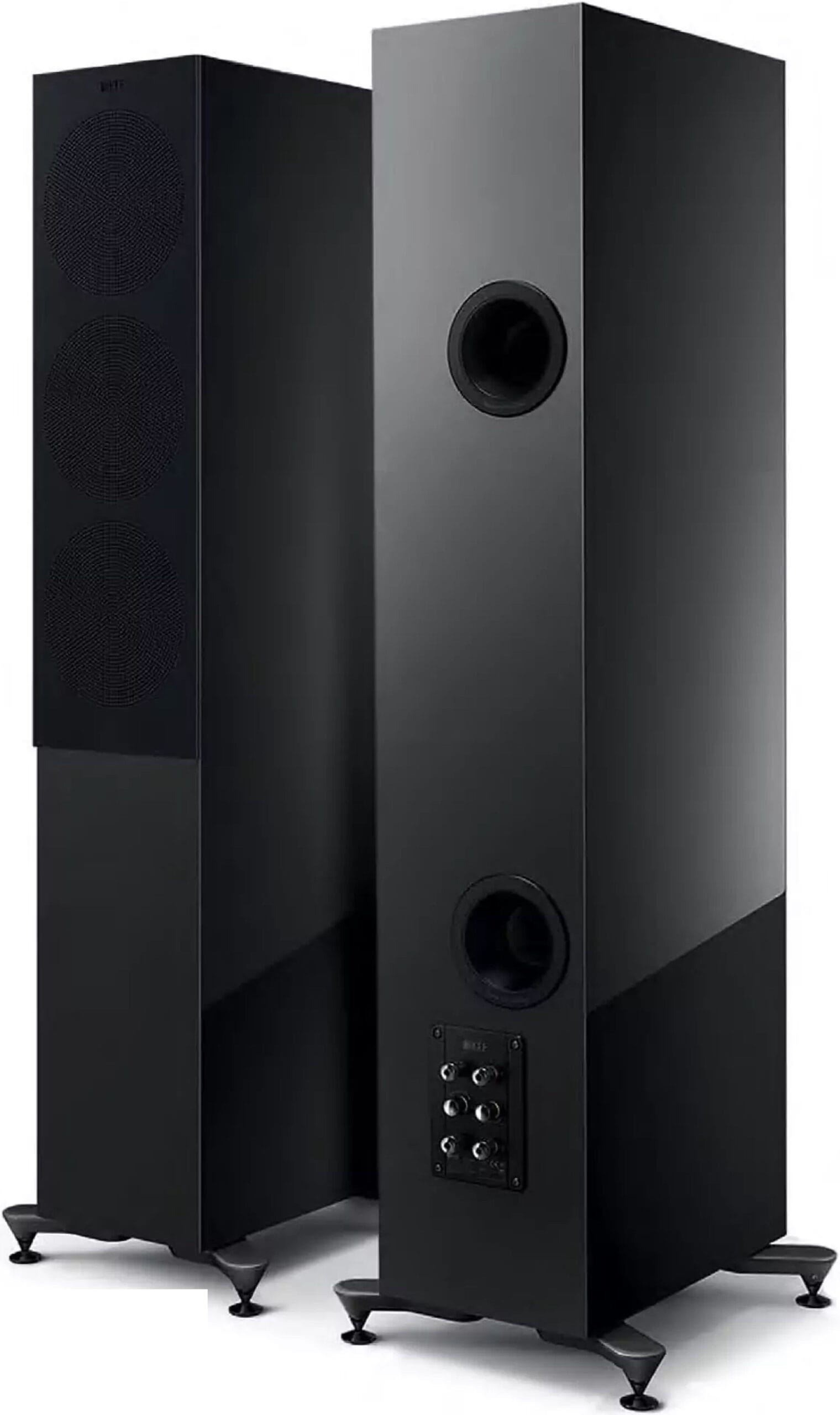
The magnificent, magnetically attached grille (left) has countless small, precision-cut holes in front of each driver.
And when needed, the KEF took off like a storm: At “Make Us Stronger” by Ghost Rider (Dreamstate Records), a bass-heavy electronic track ideal for testing speakers, it left no dry eye after 1:10 minutes when the intense impulses started.
In short, the KEF sounded spot-on and, despite its precision and wealth of information, always maintained a relaxed tone.
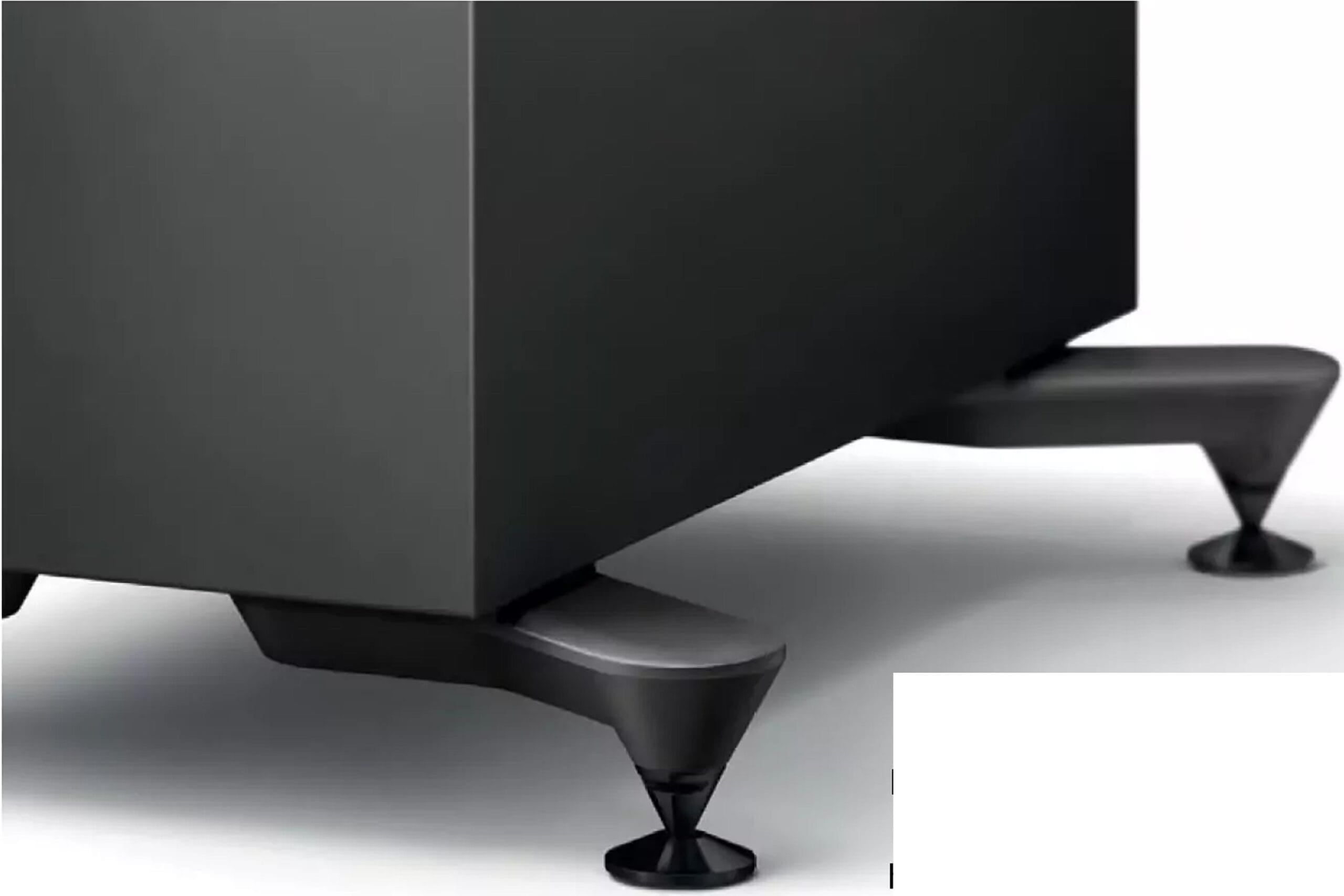
The massive, approximately 29-kilogram cabinet of the R7 Meta rests on four individually mounted metal outriggers, with height-adjustable spikes attached.
Performance Measurement
Three-way floor-standing speaker with bass reflex port and coaxial mid/high-frequency driver unit. Exceptionally clean frequency responses in all directions – moderate ripple ±0.5 dB, steadily falling curve, 6 dB between 100 Hz and 10 kHz. Lower frequency (-3/-6 dB): 42/35 Hz.
Evenly rising bass distortion, very low distortion in mid and upper frequencies, max SPL of 101 dB. Excellent time response: extremely fast decay (waterfall), impulse response without phase inversion. Low impedance spread from 4-16 ohms, recommended amplifier power 50-60 W/4Ω.
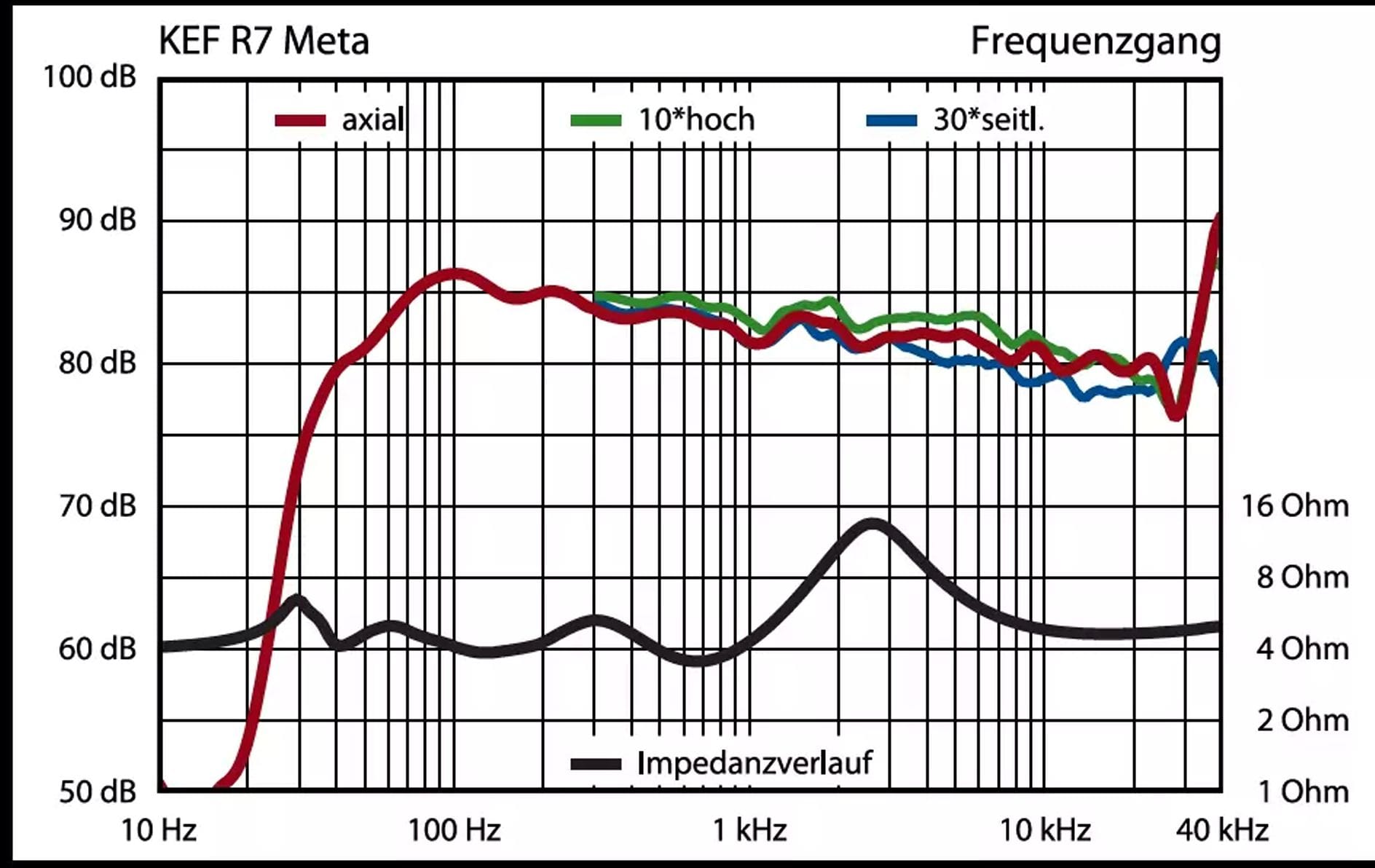
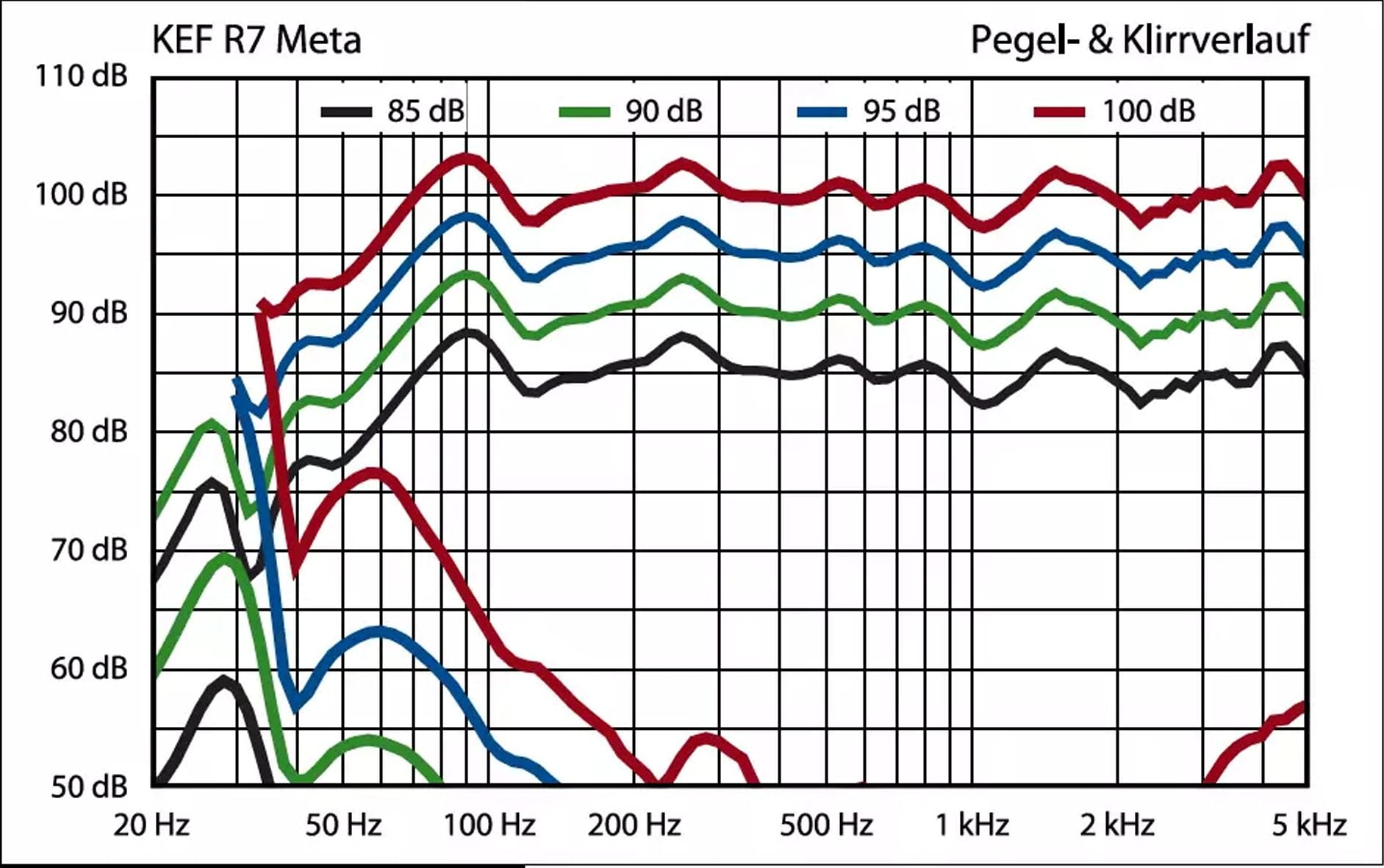
SPECIFICATIONS
| Distributor | GP Acoustics GmbH 0201 17039-0 |
| Website | kef.com |
| Warranty | 5 years |
| Dimensions (W x H x D) | 20.0 x 106.2 x 38.4 cm |
| Weight | 29.3 kg |
| Veneer/Foil/Lacquer | •/-/• |
| Colors | Black, White, Walnut, Titanium |
| Operating Principles | 3-Way Bass Reflex |
| Room Adjustment | – |
| Special Features | Port plugs available |
– is no, • is yes
Verdict
The technical improvements KEF has made to the current R series are far from the usual incremental steps that new editions of established speaker series bring. The years of effort the British have put into MAT, Uni-Q, and the “black hole” have resulted in a significant leap forward compared to the predecessor KEF R7, even though the two models look very similar at first glance. The new R7 Meta is a speaker that, in terms of sound, measurements, build quality, and practicality, can be considered a reference in its price class according to the editorial team.
TEST RESULTS
Neutrality_________________8/10
Resolution_________________8.5/10
Imaging_________________9/10
Dynamics_________________8/10
Bass_____________________7.5/10
Sound Rating Max 10: 8.4/10
Lab Analysis Max 10: 8.4/10
Product Quality Max 10: 8/10
AUDIO BENCHMARK
Overall Rating________________8.3/10
Price/Performance________________Exceptional
When you purchase through links on our site, I may earn an affiliate commission. Here’s how it works.




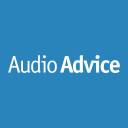








Hi, for the R7 meta you are talking about a very very fast decay mentioning the waterfall graph. As I can’t find this graph anywhere if you have it can you send it to me?
Thank you